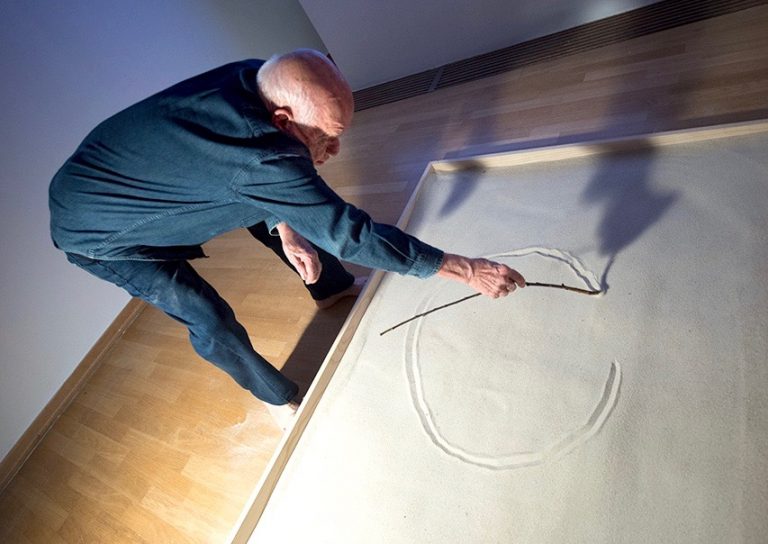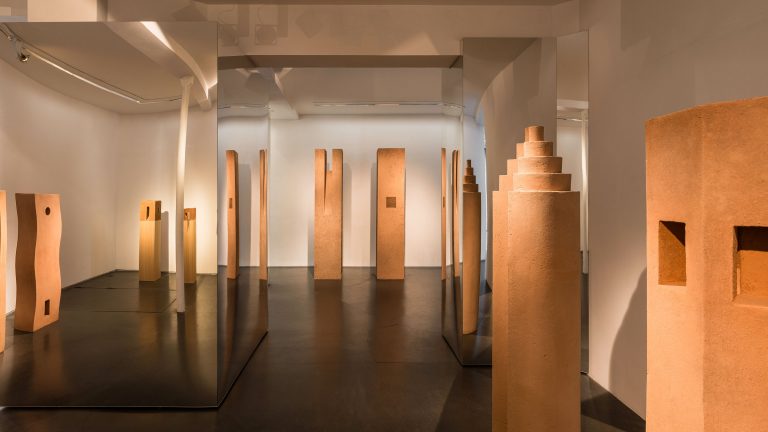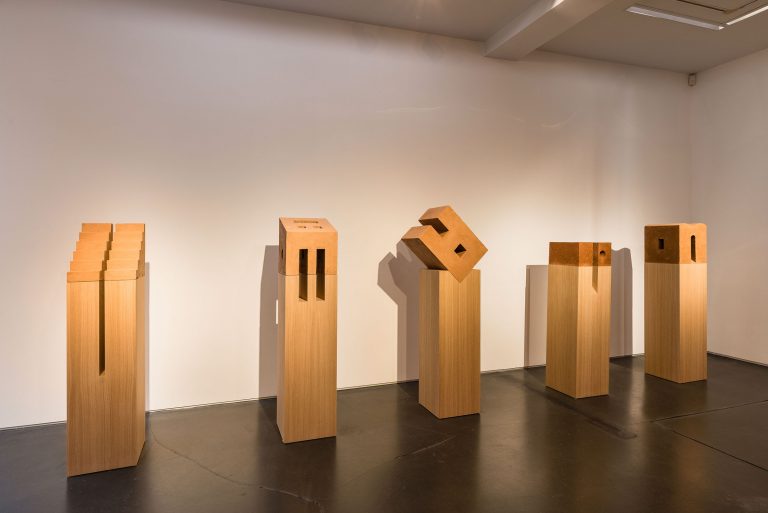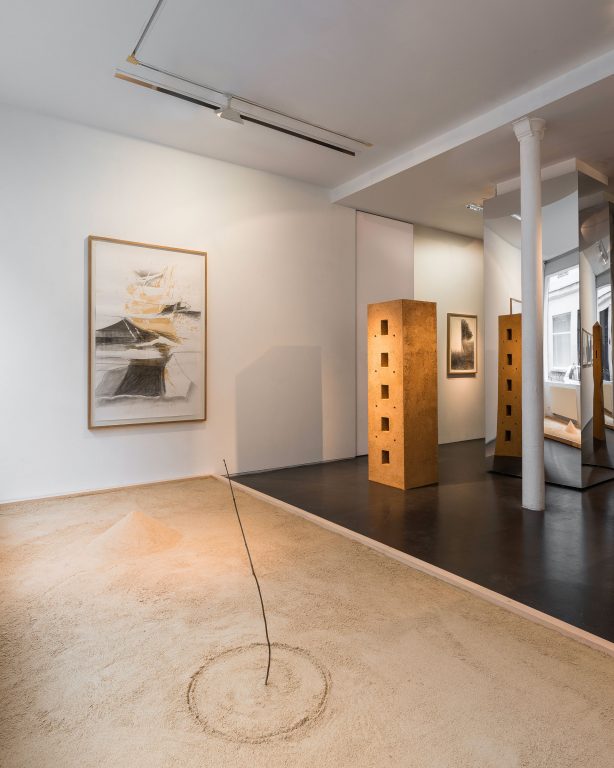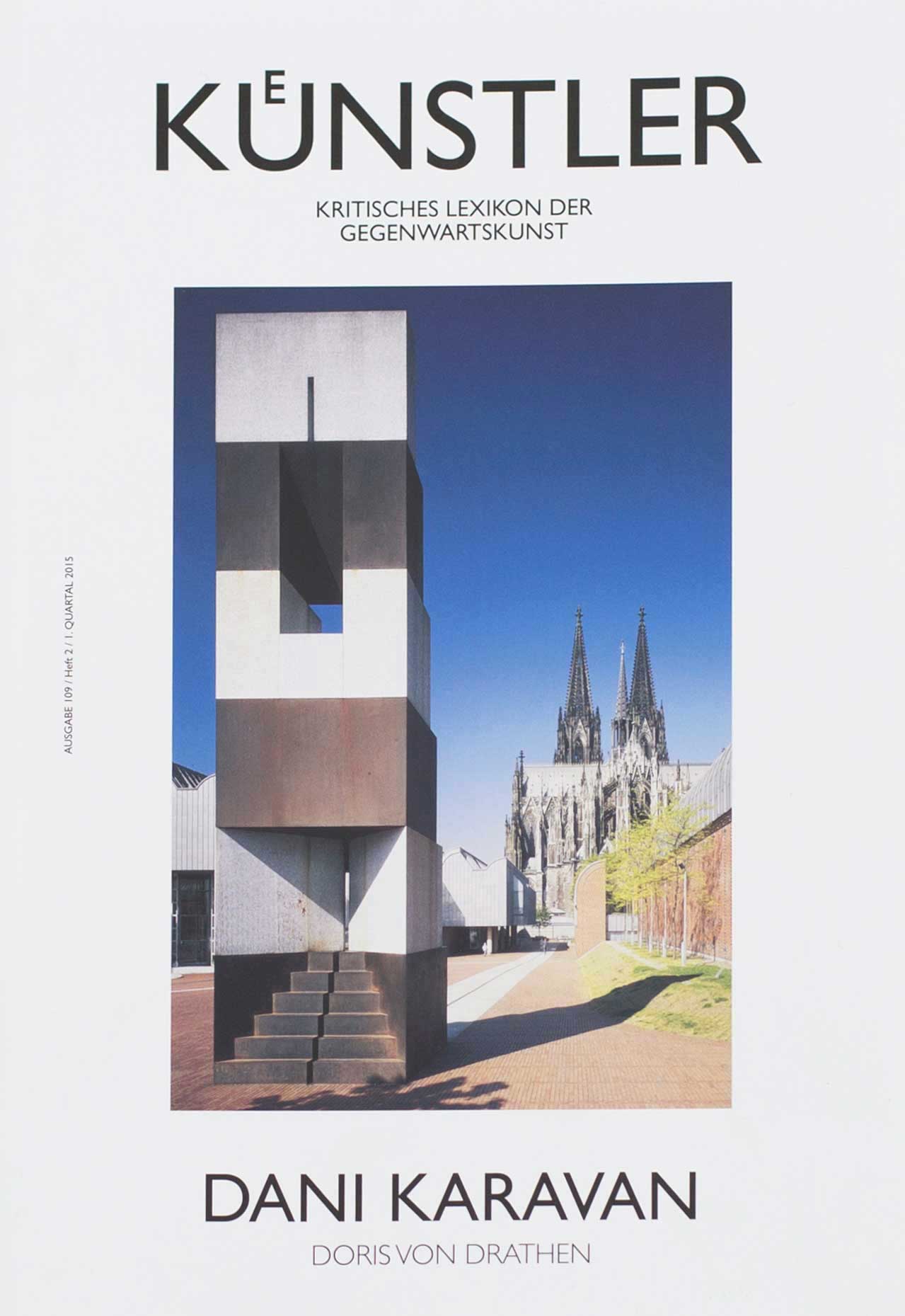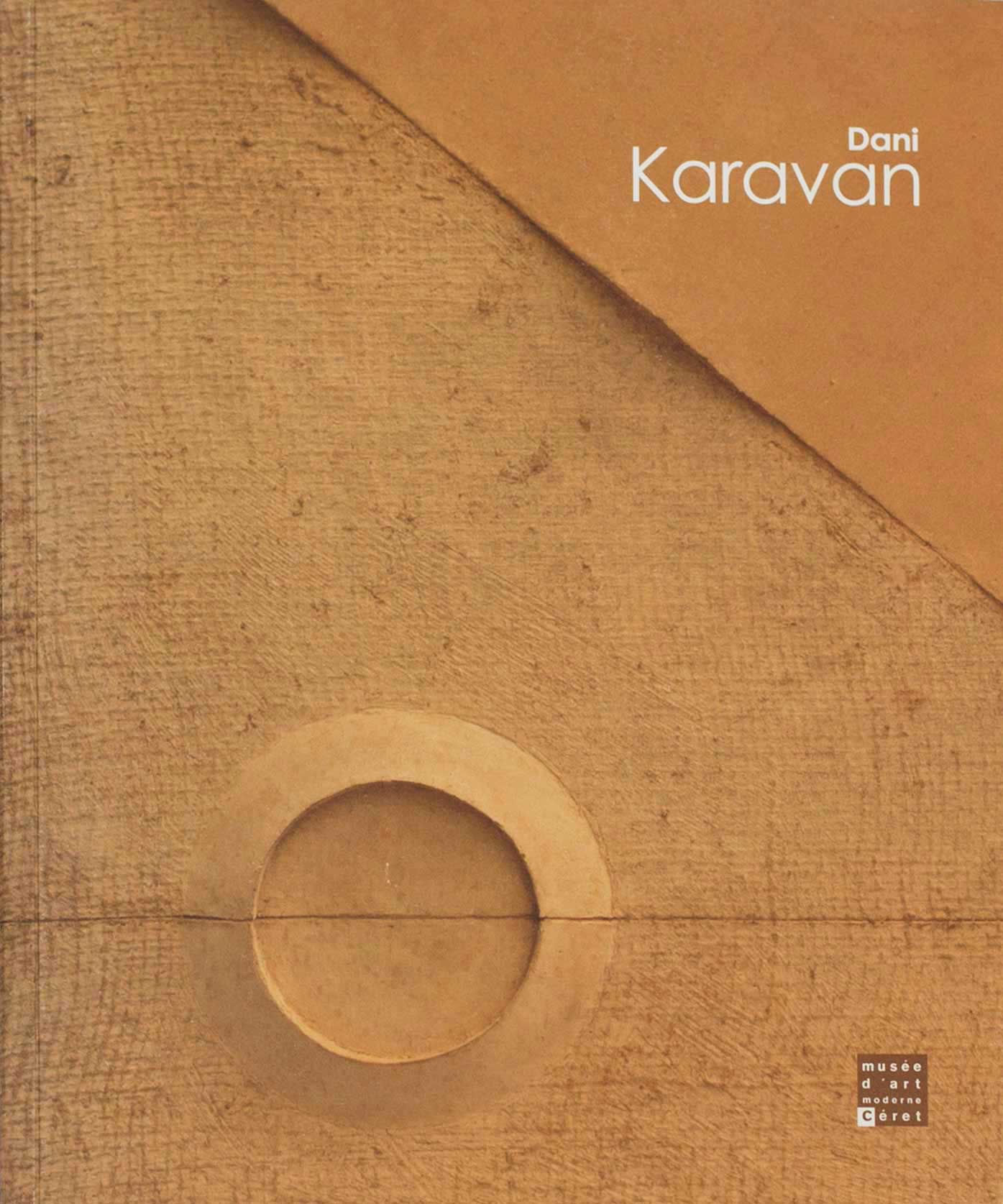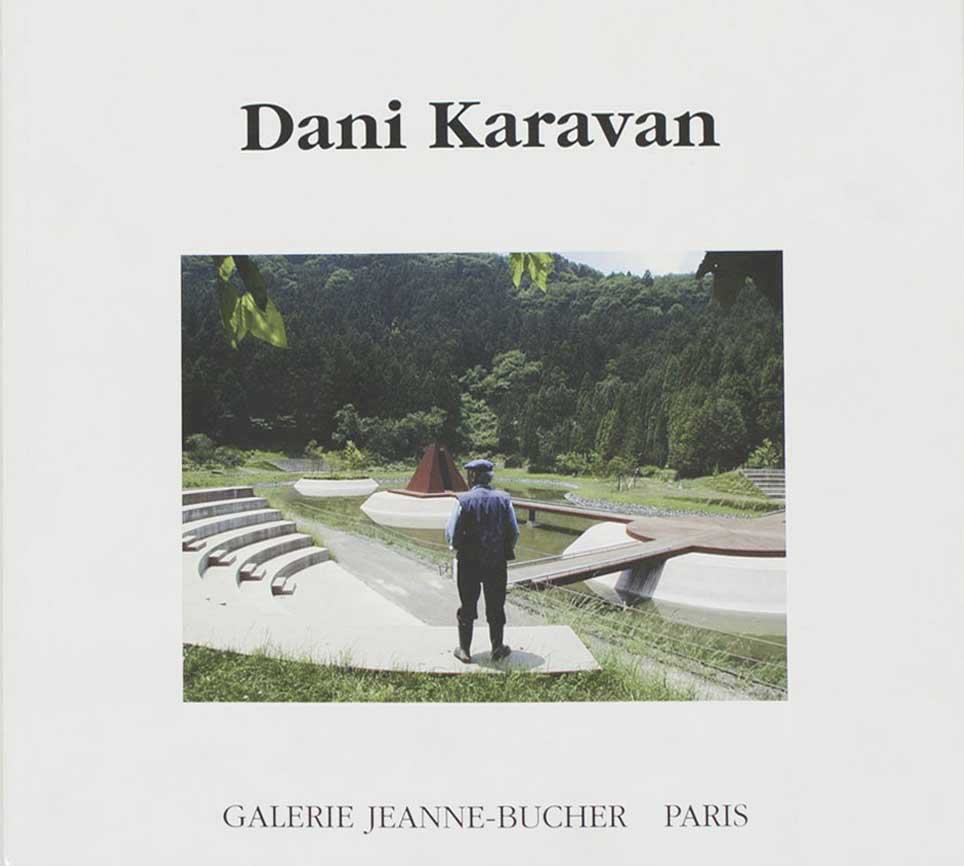Photograph by Georges Poncet
Photograph by Georges Poncet
Gaasbeek Castle, Belgium
Jeanne Bucher Jaeger — Marais Space
Photograph by Grégory Copitet
Jeanne Bucher Jaeger — Marais Space
Photograph by Grégory Copitet
Jeanne Bucher Jaeger — Marais Space
Photograph by Grégory Copitet
After studying art in Tel Aviv, Jerusalem, Florence and Paris, Dani Karavan, born in 1930 in Tel Aviv, began creating sets for theatre, opera and dance in the 1960s, notably for the Martha Graham dance company. His work quickly turned to environmental sculpture, of which the Negev Monument is the first internationally recognised emblematic expression. His profoundly humanistic works were to spread to the four corners of the planet, drawing their material from natural elements such as sand, wood, water, wind and light. Conceived as spaces dedicated to evoking memory, commemorating history, underlining the destiny of a site, paying homage and questioning the human condition, they are also places of life, reflection, meditation and communion with nature.
In 1976, the artist represented Israel at the Venice Biennale, and a year later participated in Documenta 6 in Kassel. The gallery exhibited his work in the 1980s, when he began his Axe Majeur in Cergy-Pontoise, and has shown it on several occasions over the years through his plastiline models in bronze or marble, his drawings and his neon works.
Dani Karavan received prestigious international awards such as the Israel Prize (1977); the Medal of Plastic Arts of the French Academy of Architecture (1992); the Goslar Kaiserring in Germany (1996); UNESCO Artist for Peace (1996); the Praemium Imperiale in Japan (1998); the Goethe Medal, Germany (1999); the Michelangelo Prize, Carrara, Italy (2005); the Legion of Honour, France (2014).
Among the artist’s famous works: The Negev Monument (1963-1968) in Israel, the Axe Majeur in Cergy-Pontoise, Line 1,2,3+1+1=5 in Italy, at the Fattoria di Celle (Pistoia, 1982-2000), the Chemin des droits de l’Homme in Nuremberg (1989-1993), Passages – Homage to Walter Benjamin (1990-1994, Portbou, Spain), Murou Art Forest (1998- 2006, Murou, Japan), Sinti and Roma Memorial (1999- 2012, Berlin), Culture Square (2005-2012, Tel Aviv, Israel). Dani Karavan has exhibited in many museums around the world such as the Martin-Gropius-Bau in Berlin, the Tel Aviv Museum of Art in Israel, the Kamakura Museum of Modern Art in Japan, the Palazzo Vecchio in Florence, the Musée d’art moderne de la ville de Paris and the Château de Versailles.
In 2017 a work by Dani Karavan was presented at the exhibition Château Kairos at the Château de Gaasbeek in Belgium, curated by the Dutch philosopher and author Joke Hermsen. The artist is also featured in the exhibition Passion de l’Art – Galerie Jeanne Bucher Jaeger since 1925, the first retrospective devoted to the history of the gallery, at the Musée Granet in Aix-en-Provence.
50 years after the creation of his first environmental sculpture in the Israeli desert, the Negev Monument (1963-1968), the gallery has devoted a new exhibition to him in 2018, entitled ADAMA, presenting his latest sculptures, both small and large, and his bas-reliefs in raw earth concrete. These earthen concrete sculptures are reminiscent of the earthen villages of his childhood, whose constructions were conceived as habitable sculptures since rooms and furniture were made entirely of earth, like certain vestiges of Canaanite and Israelite constructions dating from 1500 to 3000 years ago. Some of them were exceptionally loaned to the Museum of Modern Art in Céret in 2015 and were presented in their entirety at the gallery. Referring to these human-sized earthen architectures, the artist comments: “Fifty years after the Negev Monument, I felt the need to return to smaller works, to chamber music“. Constantly working with simple, universal forms, in the tradition of the spatial sculptures of great 20th century artists such as Brancusi, Noguchi and Giacometti, Dani Karavan has always retained his deep nature of childhood innocence and pacifism as he describes himself: “I was born on the shores of the Mediterranean Sea, I walked in the dunes, among the olive trees, the mountains and the valleys that survived all those terrible wars. Memory has become part of my own being, and if memory is forgotten, the direction is lost and so is the path”.
Following the death on 29 May 2021 of Dani Karavan, UNESCO Artist for Peace, Audrey Azoulay, Director-General of UNESCO, wished to pay tribute to him on Wednesday 6 July 2022 by unveiling his work installed in the gardens, Square of Tolerance, Homage to Yitzhak Rabin after its restoration.
“His Square of Tolerance, installed in 1996, which intertwines Hebrew and Arabic in the UNESCO preamble, resonates today more than ever, to promote the culture of peace and refuse to deny the other.” Audrey Azoulay, 29 May 2021.
From February 4 to mid-May 2023, the gallery has dedicating a new exhibition to Dani Karavan, presented with Jean-Paul Philippe: Enchan-Temps: Inhabiting the Earth – Interior Archaeology.
Until February 11, 2024, the Centre of Polish Sculpture in Oronsko presents an exhibition dedicated to the artist, DANI KARAVAN: Artist / Citizen.
downloads
Cergy-Pontoise, France
Environmental sculpture
© Studio Karavan
Cergy-Pontoise, France
Environmental sculpture
© Studio Karavan - Photograph by Elisabeth Toll
Cergy-Pontoise, France
Environmental sculpture
© Studio Karavan - Photograph by Micha Peri
Resin and blue thread
82,1 × 16,3 × 2,6 in
Ed. 1/7
Earth sculpture
63 × 19,7 × 19,7 in
Photograph by Georges Poncet
Ed. 1/7
Earth sculpture
78,7 × Ø 19,7 in
Photograph by Georges Poncet
Resin
34,7 × 15,8 × 4,7 in
Bronze and Carrare marble
42 × 10,2 × 10,2 in
Edition of 8
Photograph by Jean-Louis Losi
Israel
Environmental sculpture
© Studio Karavan - Photograph by David Rubinger
Israel
Environmental sculpture
© Studio Karavan - Photograph by David Rubinger
Israel
Environmental sculpture
© Studio Karavan - Photograph by David Rubinger
Israel
Environmental sculpture
© Studio Karavan - Photograph by Micha Peri
Portbou, Spain
Environmental sculpture
© Studio Karavan - Photograph by Jaume Blassi
Earth
14,2 × 14,2 × 14,2 in
Edition of 10
Photograph by Georges Poncet
Group of color photographs from different periods, in different countries, on different sites. Variable number and dimensions.
Cergy-Pontoise, France
Environmental sculpture
© Studio Karavan
Cergy-Pontoise, France
Environmental sculpture
© Studio Karavan - Photograph by Elisabeth Toll
Cergy-Pontoise, France
Environmental sculpture
© Studio Karavan - Photograph by Micha Peri
Resin and blue thread
82,1 × 16,3 × 2,6 in
Ed. 1/7
Earth sculpture
63 × 19,7 × 19,7 in
Photograph by Georges Poncet
Ed. 1/7
Earth sculpture
78,7 × Ø 19,7 in
Photograph by Georges Poncet
Resin
34,7 × 15,8 × 4,7 in
Bronze and Carrare marble
42 × 10,2 × 10,2 in
Edition of 8
Photograph by Jean-Louis Losi
Israel
Environmental sculpture
© Studio Karavan - Photograph by David Rubinger
Israel
Environmental sculpture
© Studio Karavan - Photograph by David Rubinger
Israel
Environmental sculpture
© Studio Karavan - Photograph by David Rubinger
Israel
Environmental sculpture
© Studio Karavan - Photograph by Micha Peri
Portbou, Spain
Environmental sculpture
© Studio Karavan - Photograph by Jaume Blassi
Earth
14,2 × 14,2 × 14,2 in
Edition of 10
Photograph by Georges Poncet
Group of color photographs from different periods, in different countries, on different sites. Variable number and dimensions.



